by Luke Walchuk, TC Furlong Project Manager and Audio Engineer
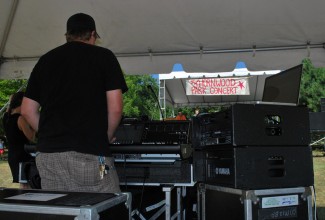 The first digital mixing console that I ever used extensively was the Yamaha M7CL.
The first digital mixing console that I ever used extensively was the Yamaha M7CL.
There is always some feeling of intimidation when one has to work with new technology, and I admit I was nervous about going digital. However, I found the M7 (as it is known to its friends) to be an extremely friendly board. I dug right in, and within the first two days I was using it as comfortably as I’d used any analog console.
Since then I’ve gotten my hands on many different digital boards, but the M7 has remained a favorite. The flexibility of the CentraLogic section, coupled with the quick and easy access to everything via the touch screen, fit my workflow.
This past weekend I had the opportunity to take Yamaha’s newest desk, the CL5, out for a spin. The gig was a neighborhood concert in a park featuring four local bands of the “weekend warrior” variety, and kicked off by performances from local kids ranging in age from about 8 to 16. The show was casual, low-pressure, and only slightly chaotic—a perfect opportunity to test-drive a new console.
originally distributed by Shure
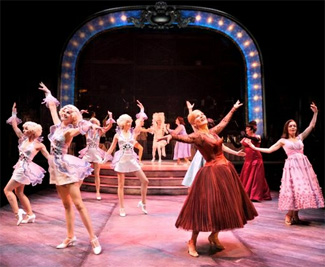 A veteran of concerts, conventions, and everything in between, the Shure UHF-R® wireless system has earned a reputation as the warhorse of wireless systems. Having shared the spotlight with mega-stars and mega-ministers, it’s no surprise that UHF-R was chosen to support two classic productions presented by two classic theater companies in two distinctly different venues in Chicago, each of which posed unique challenges.
A veteran of concerts, conventions, and everything in between, the Shure UHF-R® wireless system has earned a reputation as the warhorse of wireless systems. Having shared the spotlight with mega-stars and mega-ministers, it’s no surprise that UHF-R was chosen to support two classic productions presented by two classic theater companies in two distinctly different venues in Chicago, each of which posed unique challenges.
Audio support for both shows was provided by local wireless experts TC Furlong Incorporated, based in Lake Forest, Illinois.
At the Chicago Shakespeare Theater’s production of Sondheim Follies at Navy Pier, 20 channels of UHF-R wireless system were used, with a mix of standard and micro-bodypack transmitters.
[click to continue…]
Originally posted by Meyer Sound and picked up by Pro Sound Web
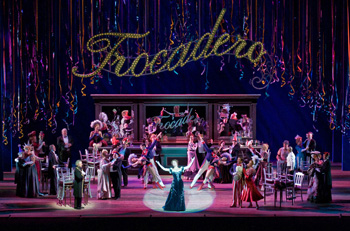 Named “one of the best opera companies in the world” by Esquire magazine, the Lyric Opera of Chicago presented an American contribution to the operatic stage at the close of its season—Show Boat. To properly present Jerome Kern and Oscar Hammerstein’s seminal masterpiece that was first performed in 1927, Lyric Opera chose a large complement of sound reinforcement equipment from Meyer Sound.
Named “one of the best opera companies in the world” by Esquire magazine, the Lyric Opera of Chicago presented an American contribution to the operatic stage at the close of its season—Show Boat. To properly present Jerome Kern and Oscar Hammerstein’s seminal masterpiece that was first performed in 1927, Lyric Opera chose a large complement of sound reinforcement equipment from Meyer Sound.
“As a company, we’re not just doing the great works of European culture but also the great works of American culture,” explains Drew Landmesser, production and technical director for Lyric Opera of Chicago. “This is a 3,600-plus-seat house, a huge hall to be doing a musical. To get everyone’s diction—their song and spoken words—and to be as crisp and clear as possible in a house this size is quite a challenge.”
[click to continue…]
by Steve Whittenhall, TC Furlong Audio Engineer and Operations Manager
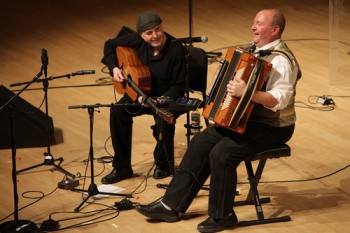 It’s not everyday you get asked to provide audio for an accordion (or “squeeze box”) show.
It’s not everyday you get asked to provide audio for an accordion (or “squeeze box”) show.
The Big Squeeze showcased the wide variety of music that features an accordion with 5 acts each performing a different musical genre—Irish, classical, orchestral, jazz, and Zydeco.
The venue was an 800-seat orchestra hall.
In many orchestra halls, designing a natural-sounding loudspeaker setup can be a challenge.
Click to read more about The Big Squeeze
via Meyer Sound – originally posted Feb. 2012
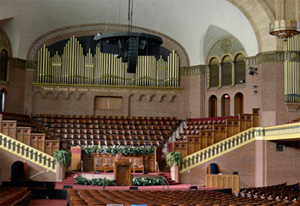 Built in the mid-1920s, The Moody Church in downtown Chicago accommodates more than 3,700 worshippers, making it the largest non-pillared auditorium in the metro area. Amplification inside the vast oval sanctuary was once fraught with challenges until the recent replacement of a 20-year-old main cluster with a new Meyer Sound MINA line array system.
Built in the mid-1920s, The Moody Church in downtown Chicago accommodates more than 3,700 worshippers, making it the largest non-pillared auditorium in the metro area. Amplification inside the vast oval sanctuary was once fraught with challenges until the recent replacement of a 20-year-old main cluster with a new Meyer Sound MINA line array system.
“To the untrained eye, the new cluster doesn’t look that much different,” admits Michael Arman, the church’s audio/visual technical coordinator, “so you might not notice we have a new system. But after the first Sunday, our senior pastor [Dr. Erwin Lutzer] told me that a number of people had praised him on his voice being in unusually good form. Apparently, they were hearing nuances they’d never heard before.”
Read more about the Moody Install
 The first digital mixing console that I ever used extensively was the Yamaha M7CL.
The first digital mixing console that I ever used extensively was the Yamaha M7CL.


